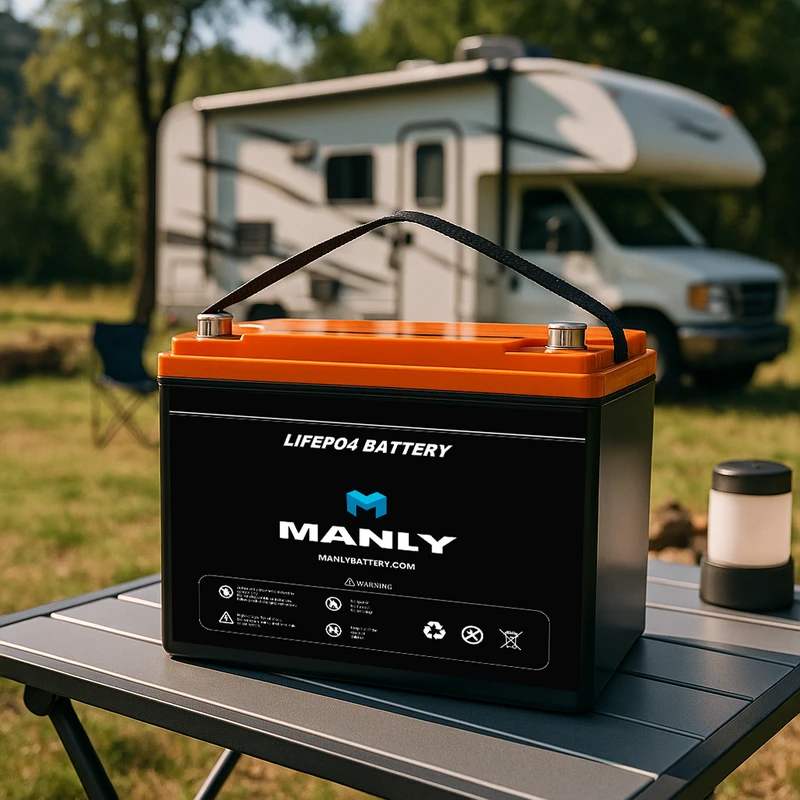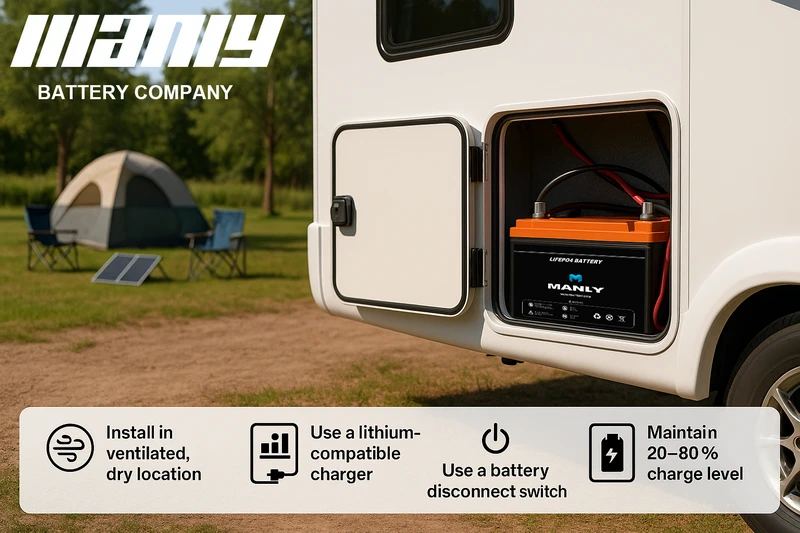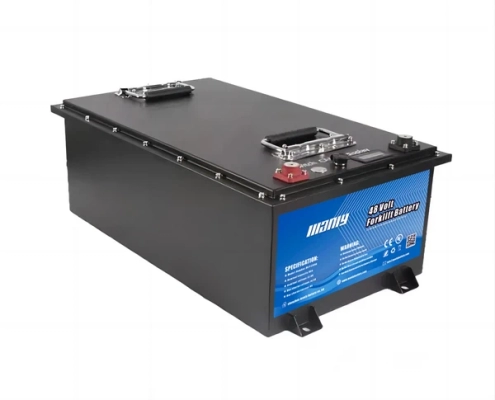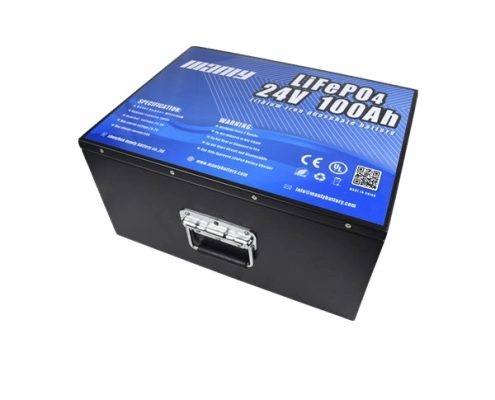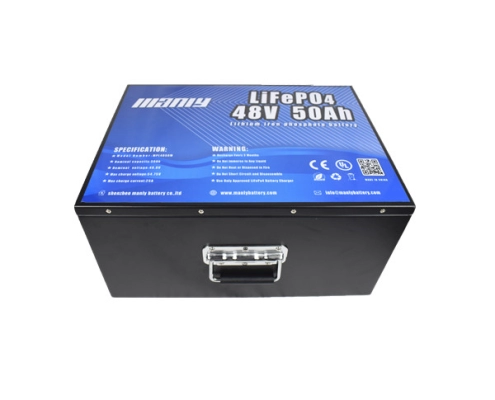Complete Guide to Selecting the Right Battery for RVs, Motorhomes, and Campers
Choosing the right power system for your RV, motorhome, or camper involves more than just picking a vehicle—it requires a clear understanding of how energy demands, battery types, and system configurations align with your travel habits. This guide breaks down the key differences between vehicle types, explains how to match your setup with the right deep cycle battery, and outlines what to look for when sourcing a lithium deep cycle battery. Whether you’re managing a long-haul motorhome or outfitting a minimalist camper, selecting the right RV battery ensures safety, efficiency, and long-term reliability.
What’s the Difference Between an RV, Motorhome, and Camper?
Understanding the distinctions between RVs, motorhomes, and campers is essential when selecting the ideal vehicle for your travels. These terms are often used interchangeably, but each category offers unique characteristics in size, functionality, and intended use.
- RV (Recreational Vehicle) is an overarching category that encompasses motorhomes, campervans, travel trailers, fifth-wheel trailers, and pop-up campers. In North America, this term broadly refers to any vehicle designed for both travel and living.
- Motorhomes, a subcategory of RVs, are large vehicles where the driving area and living space are integrated. They provide spacious interiors and come in a variety of sizes, from compact to large family models.
- Campers, however, are typically smaller, more minimalist vehicles designed for those who prioritize simplicity. They offer essential amenities, such as a bed, kitchenette, and sometimes a bathroom, making them perfect for individuals seeking a compact mobile living space.
1. Size and Space
Motorhomes are the largest vehicles in this category, offering the most expansive living space with full kitchens, bathrooms, and sleeping areas for multiple passengers. They are designed for comfort and long-term travel. Campers are much smaller, typically built on a van chassis, and suited for short trips or solo travelers. RVs cover a wide range of sizes; smaller models like campervans may be more compact, while others approach the size of a motorhome.
2. Amenities
Motorhomes offer the highest level of luxury, featuring full bathrooms, kitchens, entertainment systems, and ample storage space. RVs can range from basic to fully equipped, depending on the model. Campers are the most minimalist, providing essential amenities such as a bed, kitchenette, and possibly a small bathroom. Many campers focus on providing a back-to-basics experience, making them ideal for those seeking fewer luxuries.
3. Maneuverability
Due to their size, motorhomes can be challenging to drive and park, especially larger models. Campers, being smaller and more compact, are much easier to maneuver, making them perfect for navigating tight spots and urban areas. RVs offer a balance of maneuverability and space, with smaller models being easier to handle, though larger RVs may require more experience to drive.
4. Cost
Motorhomes, particularly those with high-end amenities, are typically the most expensive option. These vehicles come with higher initial costs, as well as ongoing maintenance and operational expenses. RVs can range in price, with more affordable options like small trailers and campervans. Campers are generally the most budget-friendly, offering various choices for those looking to minimize costs.
5. Intended Use
For full-time living or long-term travel, a motorhome is often the best choice. It offers superior comfort and a wide array of features, making it perfect for extended road trips. RVs are ideal for short to medium-length trips, offering a flexible combination of size and amenities. Campers are best suited for short getaways, offering simplicity, easy handling, and a no-frills experience, ideal for solo travelers or couples.
6. Which Battery is Best for These Vehicles?
When it comes to battery selection, motorhomes require a robust, high-capacity solution to support their larger electrical systems. A lithium deep cycle battery is an excellent option for motorhomes, providing more power, extended life, and faster charging compared to traditional lead-acid batteries. RV batteries may vary based on the vehicle’s size and type, but deep cycle batteries are generally a great fit as they can manage the continuous discharge and recharge cycles. Camper batteries, on the other hand, need to provide enough power for essential appliances like lights and small electronics. A deep cycle battery, combined with solar power for off-grid camping, ensures campers have the necessary power for short trips.
Why Does Battery Type Matter For Your RV, Motorhome, Or Camper?
Selecting the right battery for your RV, motorhome, or camper is crucial for ensuring reliable performance and longevity. The battery type influences how well your vehicle can run appliances, maintain power while traveling, and support off-grid living. The proper choice can turn a smooth road trip into a seamless experience, while the wrong one could lead to inconvenient setbacks.
1. Energy Needs and Vehicle Size
Battery selection should be driven by the size of your vehicle and the power demands of the appliances you intend to run. Motorhomes, being the largest of these vehicles, generally require more powerful batteries due to their size and the numerous energy-draining systems, such as air conditioning, refrigerators, and entertainment units. Campers, in contrast, are smaller and more minimalist, typically needing less energy to power basic devices like lights, small refrigerators, and water pumps. Deep cycle batteries—whether lithium or lead-acid—are ideal for motorhomes and RVs, as they can withstand frequent discharge and recharge cycles, providing the power needed for longer journeys.
2. Advantages of Lithium Batteries for Extended Travel
Lithium deep cycle batteries are increasingly favored by travelers, especially those with motorhomes. These batteries offer superior energy density, faster charging times, and a significantly longer lifespan compared to traditional lead-acid batteries. Lithium batteries are highly efficient, allowing them to support appliances for longer periods without frequent recharging. For RVs and motorhomes, especially those that travel long distances or stay off-grid for extended durations, investing in lithium batteries proves to be financially beneficial over time, thanks to their durability and outstanding performance.
3. Battery Management Systems (BMS) for Safety
Regardless of the vehicle type, a Battery Management System (BMS) is essential for monitoring the health of your battery. The BMS tracks voltage, temperature, and other vital metrics, ensuring the battery operates within safe parameters. This is especially important for motorhomes, where power demands are higher. A well-designed BMS helps extend battery life, protects against overcharging or overheating, and ensures optimal performance during your travels, reducing the risk of unexpected battery failure.
4. Choosing Between AGM, Lead-Acid, and Lithium Batteries
While lithium batteries are becoming the go-to option, AGM (Absorbent Glass Mat) and lead-acid batteries are still popular choices due to their lower initial cost. Lead-acid batteries are often the most affordable and suitable for smaller RVs or campers that don’t need high power outputs. However, these batteries are heavier, have a shorter lifespan, and require regular maintenance. AGM batteries, being sealed and maintenance-free, provide a good middle ground. They offer better performance and longer lifespan than traditional lead-acid batteries, though at a higher upfront cost.
5. Cost vs. Long-Term Investment
When choosing a battery for your motorhome or RV, the initial cost is an important factor, but it should be weighed against the long-term value. While lithium deep cycle batteries come with a higher upfront cost, their extended lifespan, faster charging capabilities, and low maintenance can save you money in the long run. Conversely, lead-acid or AGM batteries may seem more affordable initially but require frequent replacements and maintenance, leading to higher lifetime costs. Assessing your vehicle’s energy requirements and how long you plan to use it will help you decide if the higher upfront cost of lithium batteries is justified.
Which Battery Setup Is Best for Motorhomes, RVs, and Campers?
Proper battery selection directly impacts electrical performance, system longevity, and off-grid capability across RVs, motorhomes, and campers. Matching the battery to your vehicle type and usage scenario helps reduce operational risks and improves long-term return on investment.
1. Motorhomes: Prioritize Capacity and Energy Efficiency
Motorhomes operate multiple high-load systems simultaneously—HVAC, water heaters, cooktops—which places high demand on the power system. A motorhome battery must deliver continuous high discharge while supporting deep cycling.
- Recommended setup: 300–600Ah lithium deep cycle battery at 12V, 24V, or 48V.
- System example: A 48V LiFePO4 battery paired with a 6000W inverter enables simultaneous operation of air conditioning, microwave, and electric water heater.
- Lifecycle benefit: Top-tier lithium batteries offer up to 6000 cycles at 80% DoD, significantly outlasting flooded or AGM types.
- Weight savings: LiFePO4 models cut system weight by 50% or more, improving fuel efficiency and reducing chassis load.
- Lithium deep cycle batteries not only offer higher energy density but also recharge faster—critical for motorhomes that rely on solar, alternators, or generator input during long-distance or off-grid operation.
2. RVs: Balance Power Versatility and Moderate Load Demand
RVs vary widely—from towable trailers to integrated van platforms—and their RV battery system should reflect real-world usage. Power requirements typically fall between 100Ah and 300Ah, supporting appliances like 12V fridges, ceiling fans, and lighting systems.
- Best fit: Sealed AGM or lithium deep cycle batteries that tolerate 80% depth-of-discharge without performance degradation.
- Voltage strategy: 12V lithium remains the industry standard due to compatibility with OEM alternators, MPPT controllers, and DC appliances.
- Inverter pairing: For RVs using 1500–3000W inverters, twin 100Ah–150Ah lithium banks reduce voltage drop and maintain manageable wiring gauge.
- Compared to traditional lead-acid units, lithium RV batteries improve power availability and reduce downtime, especially during intermittent solar charging or partial generator use.
3. Campers: Emphasize Portability and Minimal System Complexity
Campers require compact, lightweight, and efficient energy storage. A camper battery should support critical loads—LED lighting, water pumps, fans—without excessive wiring or maintenance.
- Typical setup: 50–100Ah lithium deep cycle battery at 12V.
- Application advantage: Built-in BMS systems simplify integration, protect against over-discharge, and eliminate the need for external regulators.
- Off-grid performance: Lithium’s 95–98% charge efficiency and low internal resistance ensure reliable function even under partial sun.
For solar-reliant camper builds, a 100Ah 12V lithium battery paired with a 200W–400W solar panel and a basic 1000W inverter meets typical weekend demands without overbuilding the system.
4. Matching Battery Voltage to Vehicle Platform
Choosing the correct system voltage—12V, 24V, or 48V—depends on inverter load, wiring length, and alternator or charge system design.
| System Voltage | Typical Use Case | Key Benefits | Potential Limitations |
| 12V | Light-duty RVs, campers | Universal accessory support, simpler wiring | Limited inverter output (~3000W max) |
| 24V | Mid-size RV platforms | Lower cable loss, better inverter pairing | Fewer off-the-shelf 24V appliances |
| 48V | Large motorhomes | Efficient high-load delivery, thinner wires | Requires converters for standard 12V loads |
| 400V+ | Custom EV conversions | Enables DC fast charging, EV drivetrain use | High integration complexity, safety risk |
12V remains dominant in standard RVs due to widespread compatibility. However, 48V systems are expanding rapidly, driven by OEM adoption for higher inverter loads and improved energy transfer efficiency.
5. Battery Management Systems (BMS) Are Essential for System Protection
Every battery system—whether a single camper battery or a 48V pack in a motorhome—requires a reliable Battery Management System (BMS). The BMS protects cells from overvoltage, under-temperature, and thermal events while enabling real-time diagnostics.
- Modern BMS features: Bluetooth or CAN bus integration for remote system monitoring and alerts.
- Protection functions: Active cell balancing, current limiting, and thermal cutoff to prevent battery damage.
Many advanced lithium deep cycle battery units now include factory-integrated BMS, reducing setup complexity and improving system safety for professional and DIY installations.
6. Summary Recommendations
Below is a comparative summary of recommended battery types and configurations by vehicle class:
| Vehicle Type | Preferred Battery Type | Capacity Range | System Voltage | Inverter Output |
| Camper | Lithium deep cycle battery | 50–100Ah | 12V | Up to 1500W |
| RV | AGM or lithium battery | 100–300Ah | 12V / 24V | 2000–3000W |
| Motorhome | Lithium deep cycle battery | 300–600Ah+ | 48V preferred | 6000–8000W or higher |
Choosing the right battery architecture based on vehicle class, energy demands, and installation footprint ensures better thermal management, higher energy return, and improved lifecycle economics.
For OEMs, integrators, or large-volume buyers, aligning battery specs with load analysis and platform voltage is key to reducing maintenance costs and maximizing uptime across seasonal or commercial deployments.
What Should You Consider When Selecting Your Battery?
Battery selection for RV battery, motorhome battery, or camper battery systems must go beyond capacity ratings or unit cost. A high-performing battery must meet rigorous standards in safety, consistency, component transparency, and lifecycle value. System reliability depends not only on chemistry but also on the supplier’s engineering depth and support capabilities.
1. Battery Cell Grade and Supplier Disclosure
The performance and longevity of any lithium deep cycle battery depend on the internal cell quality. Cells are graded by manufacturers—such as MANLY Battery, CATL, EVE, BYD, and CALB—into Class A, B, or C based on cycle uniformity, internal resistance, and energy density.
- Best practice: Request cell batch reports that include voltage, resistance, and capacity metrics.
- Risk mitigation: Avoid batteries without traceable test data. Inconsistent cells cause voltage imbalance, which accelerates degradation and BMS failure.
Tip: A 100Ah LiFePO₄ battery using B-grade cells from a certified supplier is sufficient for most off-grid RV power needs, assuming matched internal resistance across groups.
2. Battery Management System (BMS) Quality and Architecture
A stable deep cycle battery must include a reliable BMS capable of controlling system integrity under all conditions.
Key BMS functions include:
- Monitoring voltage, current, and temperature
- Active/passive cell balancing
- Protection against overcharge, overcurrent, or thermal faults
Industry-proven BMS models—such as JK, JBD, or ANT—offer better fault response and CANbus/Bluetooth integration. Avoid generic boards lacking certification or field validation, especially in systems above 200Ah.
3. Safety Standards and Third-Party Certifications
Never deploy a camper battery or RV energy storage system without confirmed safety compliance. Trusted lithium battery manufacturers submit products to international testing protocols, covering:
- Short-circuit resilience
- Thermal and mechanical shock resistance
- Overvoltage and undervoltage tolerance
- Fire exposure and puncture endurance
Common certifications include:
UN38.3 (transport safety), UL1642 (cell-level), IEC62133 (battery pack), and CE/ROHS (general compliance). Refusal to provide documentation is a significant red flag.
4. Housing, Mechanical Design, and Accessibility
Battery housing impacts not only durability but also serviceability. Rugged builds use bolted aluminum or stainless steel enclosures, allowing teardown and inspection. Conversely, riveted or sealed plastic designs prevent access and complicate troubleshooting.
Pro buyers should verify:
- Access to BMS and fuses
- Internal busbar layout and cell spacing
- Documentation of post-weld integrity or leakage test reports
- OEMs and certified installers often reject batteries that cannot be field-inspected.
5. Engineering IP and Innovation Capability
Battery brands that invest in engineering IP often offer better lifecycle performance and safety. Look for patented technologies in:
- Cell balancing logic
- Modular battery architecture
- Firmware-controlled smart displays
- Precision welding and thermal pad integration
Lack of intellectual property signals contract manufacturing with minimal oversight—a risk for fleet deployments or commercial builds.
6. Warranty Duration and Fire Insurance
A serious lithium battery provider backs products with clear warranty terms. For RV battery applications, a 5-year minimum is now standard; 10-year warranties indicate strong confidence in cell source and BMS logic.
For critical-use installations, ask about:
- Fire damage liability
- Third-party insurance coverage
- Clear definitions of excluded failure modes
Avoid vague policies that omit common faults like BMS lockout or capacity fade.
7. Local Support and After-Sales Capabilities
Imported motorhome battery products often lack local repair networks. For U.S. buyers, return shipping is frequently prohibited due to hazmat regulations.
Recommendations:
- Confirm supplier has U.S.-based service center or technician network
- Ask for a service plan or protocol before purchase
- Verify spare part availability (BMS, fuses, connectors)
Failure to verify support may result in system downtime and full replacement cost.
8. Lifecycle Cost Analysis, Not Just Upfront Price
Battery pricing must be viewed through the lens of cost per usable kilowatt-hour (kWh). A low-cost battery with poor cycle life often leads to higher long-term expense.
| Battery Type | Price (USD) | Usable Energy | Estimated Cycles | Cost per kWh (lifetime) |
| Low-grade 100Ah LiFePO₄ | $250–350 | ~1.0 kWh | 1500–2000 | $0.17–$0.23 |
| Premium 100Ah LiFePO₄ | $450–600 | 1.28–1.3 kWh | 4000–6000 | $0.08–$0.14 |
Metric to use: cost ÷ (usable energy × cycle count). Avoid calculating only on sticker price.
9. Purchase Agreements and Risk Clauses
Formal documentation protects against fraud and performance misrepresentation. A compliant supplier should provide:
- Invoice with battery cell brand and grade (e.g., “CATL B-grade”)
- BMS model and safety ratings
- Spec matching terms and misrepresentation remedies
- Acceptance criteria for deviations (capacity tolerance, voltage range)
Professionally structured battery companies often include factory serial numbers, QR codes, and traceability sheets in every shipment.
10. Brand Reputation and Field References
Don’t rely solely on star ratings. Evaluate whether the brand is trusted in serious applications:
- Used by OEMs in marine, solar, or EV conversions?
- Supported by integrators on forums like DIY Solar Forum or iRV2?
- Can serial numbers be traced back to pack assembly and cell source?
Brands with proven deployment in energy storage, marine battery systems, and off-grid solar builds tend to offer better reliability and replacement assurance.
Conclusion
A reliable energy system is essential for RVs, motorhomes, and campers, and it starts with informed battery selection. From identifying the right battery chemistry and voltage to verifying BMS performance, warranty terms, and supplier credibility, each factor plays a critical role in long-term performance and cost-effectiveness. Whether you’re building for commercial deployment or personal off-grid travel, aligning your motorhome battery, camper battery, or RV battery with your actual energy use and system architecture ensures optimal results. Invest in quality, and your power system will deliver performance that lasts.
FAQ
1. How long will a camper run on a battery?
A camper can typically run 1 to 3 days on a single deep cycle battery, depending on battery size and energy usage.
For example, a 12V 100Ah lithium deep cycle battery offers about 1.2 kWh of usable energy. That’s enough to power LED lights, a water pump, and a small 12V fridge for roughly 24 to 48 hours if used efficiently. However, factors like temperature, solar input, and inverter loss affect actual runtime. Using multiple batteries or adding solar panels can extend off-grid time significantly.
2. What size battery do I need for my motorhome?
Most motorhomes need a battery bank between 300Ah and 600Ah, depending on appliance load and travel duration.
If your motorhome runs high-demand systems like HVAC, induction cooktops, and entertainment centers, a 48V system with 300Ah lithium capacity (≈15 kWh usable) is often recommended. For moderate setups, two or three 12V 200Ah lithium deep cycle batteries can support daily needs. Always size your battery based on estimated watt-hour consumption and ensure compatibility with your inverter and charger setup.

